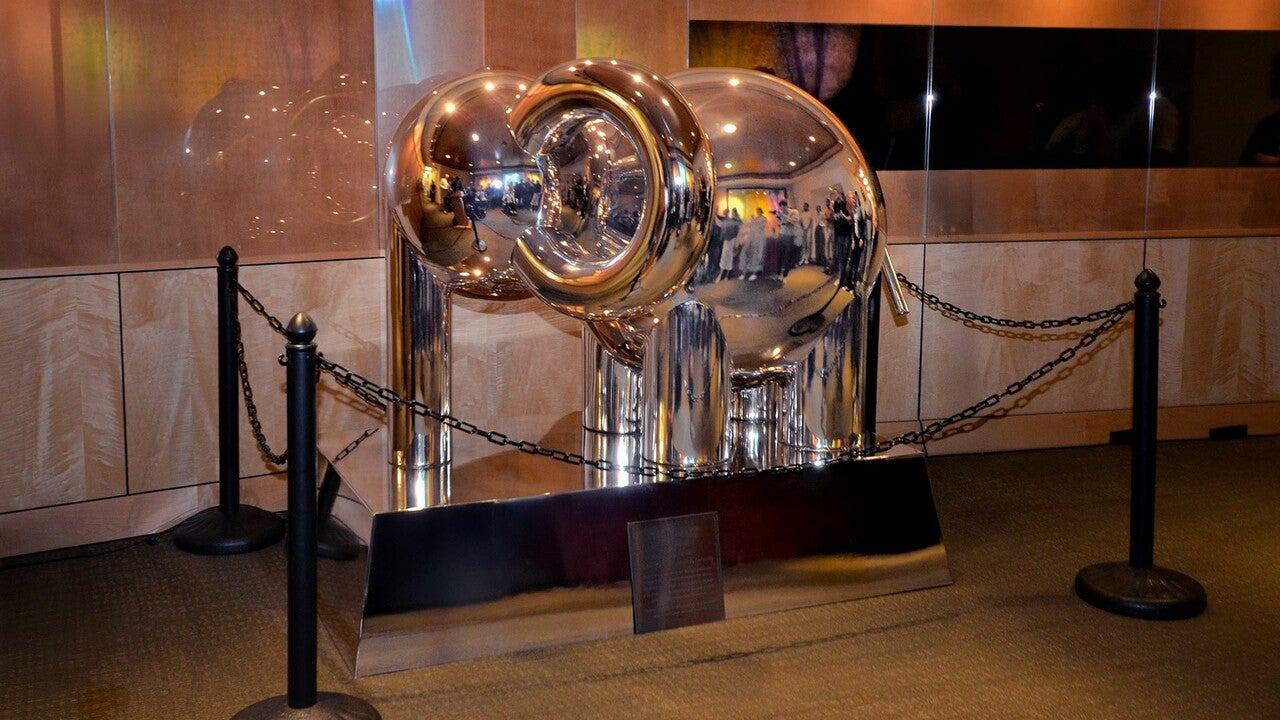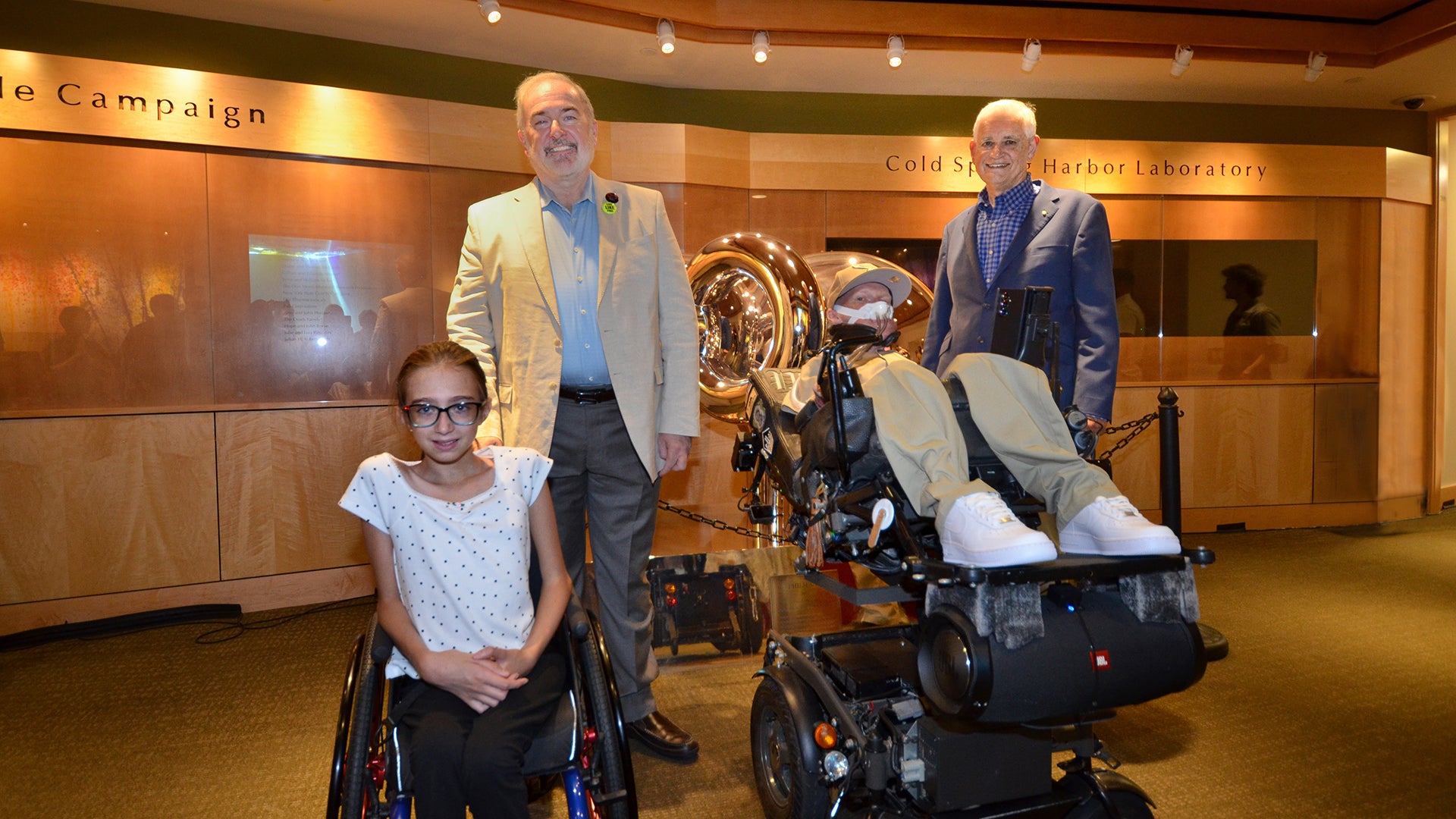On August 27, pioneering digital artist Phil L. Herold donated a chrome “Philifant” sculpture to Cold Spring Harbor Laboratory (CSHL) for the Krainer lab’s transformative, life-saving research on spinal muscular atrophy (SMA). CSHL Professor Adrian Krainer’s work led to the development of Spinraza, the first FDA-approved treatment for SMA. At the time, the neurodegenerative disease was the leading cause of genetic infant death. Initially approved only for children, Herold was one of the earliest adult patients to receive the treatment.
“It changed everything in my life,” he says. “I am grateful beyond words for the dedication and time that so many people and companies invest to save and improve lives and to make the world a better place—especially right here in Cold Spring Harbor Laboratory.”

Herold, who was diagnosed with SMA as an infant, began treatment with Spinraza in 2020. The miracle drug has made a massive impact on his disease’s progression, enabling his body to regrow muscle and allowing him to breath under his own power for up to six hours at a time.
“When Phil started the treatment, he emailed me that he could tell right away that the drug was doing something because he didn’t feel cold all the time and he could start moving some fingers that had been paralyzed before,” Krainer says. “We are lucky that our research has been able to help people so quickly; it’s extremely rewarding. That inspires us to keep going, so I thank Phil for his generous donation and for honoring us with his visit.”
Herold is considered a forefather of digital pop art. His work can be found at renowned galleries around the world, including The Michael Perez Gallery in New York City and The Mensing Gallery in Berlin, Germany.
Written by: Nick Wurm, Communications Specialist | wurm@cshl.edu | 516-367-5940
